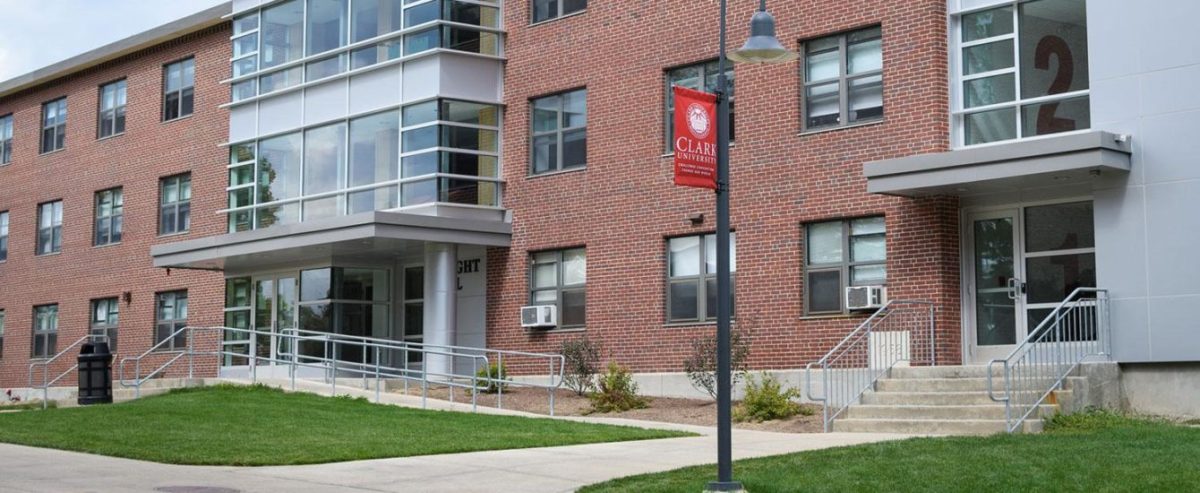When first-year Kate Goloboy returned to her dorm room in Wright Hall in January after winter break, she found that the unopened, pre-sealed snacks in containers she left behind had been eaten through. As she started unpacking, she continued to find more tell-tale signs: mice had been in her room.
“I went to pull out a drawer, and then I saw a mouse, and then I freaked out,” she said. “Then, upon further investigation, when I actually thought about it being a problem instead of just going to see my friends that I missed, I found mice feces and urine all over my bed.”
Goloboy first went to one of the Resident Advisors (RAs) in the building. While moving all her clean items back to her car after finding the mice, she ran into someone from Facilities Management who offered to help her. They found more mice living in her closet, telling her there was an apparent infestation and the mice had been there for a considerable amount of time.
Goloboy said, “It was all in my carpets, and so that’s very unsanitary.”
After the initial contact with Facilities, Goloboy communicated back and forth with Residential Life and Housing (RLH) through email and went to the RLH offices in person to try and get help. It took a week for Goloboy and her roommate to be assigned a temporary room in the Johnson Sanford Center (JSC). While waiting for a room, Goloboy stayed in many different places, including a friend’s apartment, the Wright Hall common room, and her house 45 minutes away from Clark.
Student Council Representative Ashley Gast first saw the mice in a common room in December 2023, and later heard about the infestation. She said she decided to try to do something about the situation when she saw that her friends were not getting the help they needed.
Gast spoke with several students dealing with mice infestations. Eventually, she brought the apparent rash of mouse incidents to the attention of the rest of the Undergraduate Student Council (CUSC).
“We spent probably a couple of weeks just gathering information and trying to get the story,” Gast told The Scarlet. CUSC representatives reviewed emails from Facilities and RLH, she said.
Eventually, the representatives reached out to RLH in early February. “We thought that would just be a reasonable first step,” said Gast.
“[T]hey were pretty receptive… to what we were saying overall,” Gast said. But during the meeting, Gast said she had to keep redirecting the conversation, “where I felt they were focusing more on the mice and the animals and that itself, and I was like, that’s not the point. The point is that there is a housing issue when those issues (mice) come up. That’s what I was trying to express. I know [RLH] doesn’t control mice, cockroaches, or bedbugs. My point is that these [students] need a place to stay.”
After further investigation of Clark’s available emergency housing, The Scarlet found that there are two temporary housing rooms in the basement of Maywood Hall. These rooms are designed for 48 hours of use and for students who had a medical or mental health crisis, a Title IX incident, or are experiencing housing insecurity. Based on these criteria, the students displaced by mice did not qualify for the temporary housing.
Gast did not answer when asked whether the temporary housing was in use. “I was not explicitly told that,” she said, though she was “under the assumption” that it was. Gast reiterated that temporary housing is intended to be just that – temporary – and is meant for “shorter-term stuff.”
The students who spoke with The Scarlet all agreed that communication between RLH and residents could be significantly improved to address quality-of-life issues in the dorms. Many said that getting accurate or reliable information about lesser-known housing policies, like those regarding temporary housing or pest infestations, can be difficult.
The mice in Wright Hall were not the only infestation in a first-year dorm this semester. In Bullock Hall, students living in a triple room experienced a similar situation, but with cockroaches. The students in this dorm were also not given emergency housing right away and had to become creative, like Goloboy, in finding places to stay.



